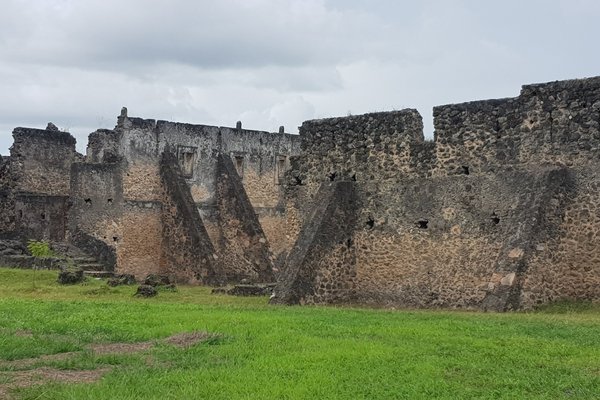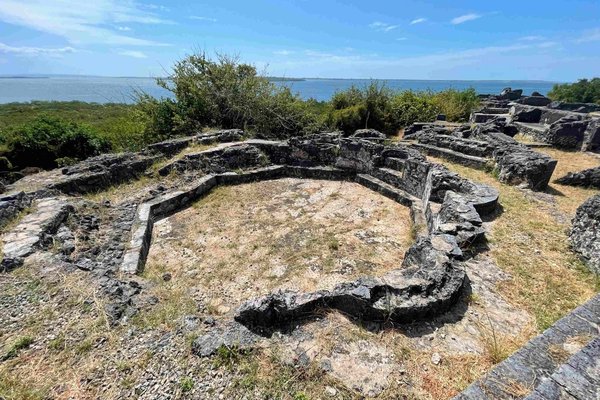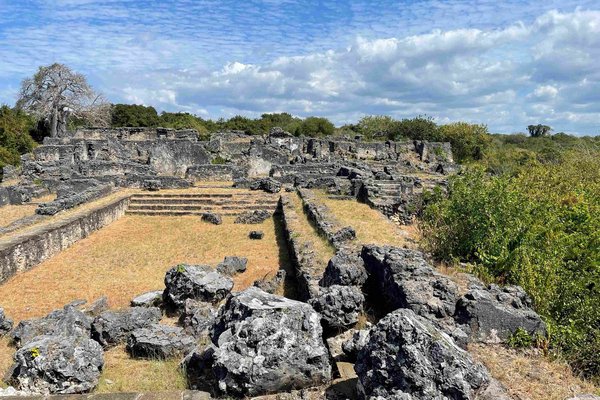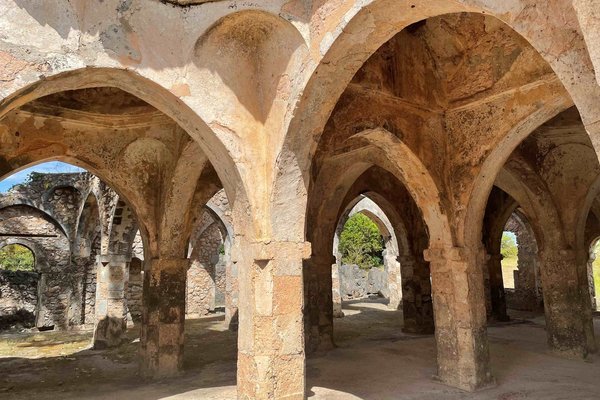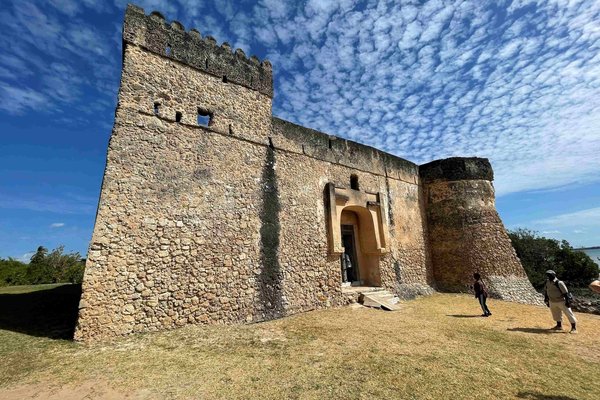Tanzania
Ruins of Kilwa Kisiwani and Songo Mnara
The Ruins of Kilwa Kisiwani and Songo Mnara comprise two ports that had an important position in East African trade between the 13th and 16th centuries.
Trade with Arabia, India and China was mainly in gold and iron from Zimbabwe, ivory and slaves from Tanzania, and textiles, jewellery, porcelain, and spices from Asia. The influence of its Swahili culture reached far. From this period date the construction of the Palace of Husuni Kubwa and a significant extension to the Great Mosque of Kilwa, the oldest standing mosque on the East African coast.
Community Perspective: Atmospheric and in good condition. The sites each lie on an island and are accessible by cruise ship or by dhow transfer from Kilwa Masoko (Songo Mnara is the furthest of the two, and the trip to get there takes about 1.5h).
Site Info
Official Information
- Full Name
- Ruins of Kilwa Kisiwani and Songo Mnara (ID: 144)
- Country
- Tanzania
- Status
-
Inscribed 1981
Site history
History of Ruins of Kilwa Kisiwani and Songo Mnara
- 2014: Removed from Danger list
- 2004: In Danger
- Continuing deterioration and serious threats
- 1981: Inscribed
- Inscribed
- Type
- Cultural
- Criteria
- iii
Links
- UNESCO
- whc.unesco.org
- Official
-
- tanzaniatourism.go.tz — Tanzania Tourist Board
- Related
-
- wmf.org — World Monuments Fund
All Links
UNESCO.org
- whc.unesco.org — whc.unesco.org/
Official Website
- tanzaniatourism.go.tz — Tanzania Tourist Board
Related Resources
- wmf.org — World Monuments Fund
Community Information
- Community Category
- Archaeological site: Civilizations of Sub-Saharan Africa
Travel Information
Guided Tour Only
Recent Connections
-
Mentioned in Paradise Lost
Kilwa Kisiwani (Quiloa), Tanzania: "Mom…
-
No Map
-
History of the World in 100 objects
Prog 60 "Kilwa Pot Sherds" (link)
Connections of Ruins of Kilwa Kisiwani and Songo Mnara
- Individual People
-
-
Ibn Battuta
-
Sir Richard Francis Burton
Visited by Burton and Speke who were returning to the coast after Speke had gone off and discovered the source of the Nile! "..rather than return directly to Zanzibar, Burton sent a note to the British consul asking for a coasting vessel and provisions so that a brief exploration could be made of the hitherto unexplored Rufiji river, some 150 kilometres to the south. The boat arrived on 9.2.1859, and the following day Burton and Speke sailed for Kilwa Kisiwani....., but found the Rufiji swollen and flooded by torrential rain. Even worse, Kilwa was in grip of a cholera epidemic which had already wiped out half the population. After inspecting nearby Portuguese and Arab ruins, Burton and Speke beat a hasty retreat to Zanzibar," -
Magellan
conquered 1505 -
Vasco da Gama
Second voyage
-
- Geography
-
-
Swahili culture
Kilwa Kisiwani and Songo Mnara provide exceptional architectural, archaeological and documentary evidence for the growth of Swahili culture and commerce (crit iii) -
Indian Ocean
-
- Trivia
-
-
Built or owned by Omanis
The Gereza Fort: the present form of the fort is of typical Omani forts.The word Gereza means prison in Swahili, possibly indicating the use of the fort as an Omani slave holding building during the late 18th century to late 19th century (wiki)See en.wikipedia.org
-
Built or owned by Portuguese
Fort Santiago -
In Video Games
Civilization VI: Kilwa Kisiwani
-
- History
-
-
Chinese Porcelain in Africa
"Cowrie shells, pearls of glass, carnelian or quartz were interphased with porcelain of the Sung dynasty as an iteim of exchange from the12th century. Chinese porcelain and Islamic monochrome faience continued to be the vectors of a bartering system well after the appearance of a monetary atelier at Kilwa " (AB eval). -
Omani Sultanate of Zanzibar (Zanj)
-
Silk Roads
Maritime Silk Road; " These Swahili merchant cities prospered by controlling the maritime trade in the Indian Ocean with Arabia, India and China, trading ivory and gold from inland for silver, perfume, Persian earthenware and Chinese porcelain." (Silk Roads Programme)See en.unesco.org
-
African Kingdoms
Kilwa Sultanate (957 - 1513)See en.wikipedia.org
-
- Architecture
- World Heritage Process
-
-
No Map
-
Perfect Inscriptions
1981 -
Inscribed on a single criterion only
iii. to bear a unique or at least exceptional testimony to a cultural tradition or to a civilization which is living or which has disappeared -
Former In Danger List sites
2004-2014
-
- Religion and Belief
-
-
Notable mosques
Great Mosque of Kilwa - From 10th century but mainly 12th/13th. Sunni (?). First true dome on East African coast.
-
- Human Activity
-
-
Slavery
-
Gold production
-
Sea Ports
-
Pearling
From the 13th to the 16th century, the merchants of Kilwa dealt in gold, silver, pearls, perfumes, Arabian crockery, Persian earthenware and Chinese porcelain; much of the trade in the Indian Ocean thus passed through their hands. (Brief description)
-
- Constructions
-
-
Prison
Gezira
-
- WHS on Other Lists
-
-
World Biosphere Reserves
Tanzania: Rufiji-Mafia-Kibiti-Kilwa Biosphere Reserve (RUMAKI) (2023) -
World Monuments Watch (past)
Kilwa Kisiwani Portuguese Fort, Lindi Region (1996) Kilwa Historic Sites (2008)
-
- Timeline
-
-
Built in the 13th century
By the 13th century, under the rule of the Mahdali family, Kilwa had become the most powerful city on the East African coast. And: "The Great Mosque of Kilwa Kisiwani is the oldest standing mosque on the East African coast and, with its sixteen domed and vaulted bays, has a unique plan. Its true great dome dating from the 13th (century)" (AB ev)
-
- Visiting conditions
-
-
Guided Tour Only
"The only way to visit Kilwa Kisiwani is with a chartered boat and a guide from the Kilwa Islands Tour Guides Association." (LP)
-
- WHS Names
-
-
Untranslated Toponyms
"Kisiwani" is Swahili for "Island".
-
- Literature & Film
-
-
Mentioned in Paradise Lost
Kilwa Kisiwani (Quiloa), Tanzania: "Mombaza, and Quiloa... the less maritime kings." Milton identifies the Swahili city-states as "maritime kings," distinguishing these specific coastal urban powers from the inland interior. The Swahili Gold Trade
-
History of the World in 100 objects
Prog 60 "Kilwa Pot Sherds" (link)
-
News
No news.
Recent Visitors
Visitors of Ruins of Kilwa Kisiwani and Songo Mnara
- Ask Gudmundsen
- Atila Ege
- Dolemite92
- Felicité
- Geert Luiken
- Iain Jackson
- Kbecq
- KentishTownRocks
- Knut
- Little Lauren Travels
- Marlies van Wolfswinkel
- Morodhi
- Nihal Ege
- Paul Schofield
- Randi Thomsen
- Roger Ourset
- Roman Bruehwiler
- Sofia84
- Solivagant
- Svein Elias
- Thomas Buechler
- Thomas van der Walt
- Vanessa Buechler
- Wojciech Fedoruk
- Zoë Sheng
Community Reviews
Show full reviewsGeert Luiken
Ruins of Kilwa Kisiwani and Songo Mnara
Ruins of Kilwa Kisiwani and Songo Mnara (Inscribed)
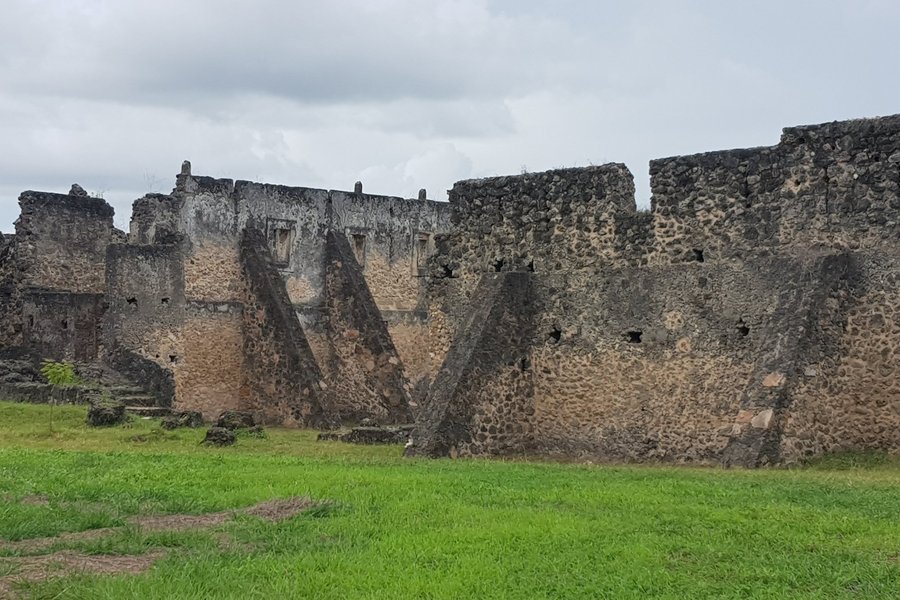
Recently I visited both Kilwa Kisiwani and Songo Mnara. As the former is already covered in many reviews I will focus om the later. Through Elisabeth, the owner of the highly recommended Kimbilio lodge in Kilwa Masoko we got into contact with Osman, a very enthousiastic and knowledgable guide. The boat trip from Kilwa Masoko to Songo Mnara takes about 1,5 hour. You arrive at a rather primitive settlement of local fishermen and after passing through some mangrove forest on foot you reach the ruïnes of the former palace dating from 11 th century. Big baobab trees have partly taken over the buildings, but there is still quite a lot to see. The site was very quiet, our group of 3 had the place to ourselves, as was also the case when we visited Kilwa Kisiwani the next day. On the way back we did some great snorkelling. It was a great trip and the ruins were quite interesting.
Keep reading 0 commentsSvein Elias
Ruins of Kilwa Kisiwani and Songo Mnara
Ruins of Kilwa Kisiwani and Songo Mnara (Inscribed)
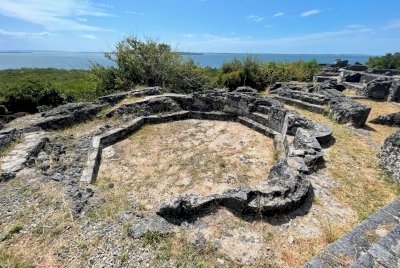
For our (European) summer holiday 2022 we aimed for three African countries and the first site we visited was the ruins of Kilwa Kisiwani. Our flight had its final stop early morning in Dar es Salam, and we spent the day at our travel agent’s premises at Kawe beach.
The following morning, we started our first roundtrip with a 4x4 safari vehicle and a driver/guide. Such a vehicle (and a driver) is not necessary for this stretch, but as we had safari plans on the roundtrip it was convenient. The drive south to Kilwa Masoko is 5-6 hours including a short meal stop. It was uneventful, but African driving is potholes, road work and the locals sharing the road.
Arriving at Kilwa Masoko around 1:30 we had the rest of the day off. We stayed at Kimbilio Lodge which is right on the beach (10 m from the water), a place with our own little cabin and the view from our bed out the door was the ocean, the sandy beach, and a parasol (made of grass and wood), simply iconic. Beeing the only guests made it even more special as we got personel service all the way, but from August their "books where full" again.
The following day we headed to the site itself, Kilwa Kisiwani. Our driver/guide took us to the harbour where we registered and picked up the local guide. When entering the boat, we were told the voyage across started with a small …
Keep reading 0 commentsWojciech Fedoruk
Ruins of Kilwa Kisiwani and Songo Mnara
Ruins of Kilwa Kisiwani and Songo Mnara (Inscribed)
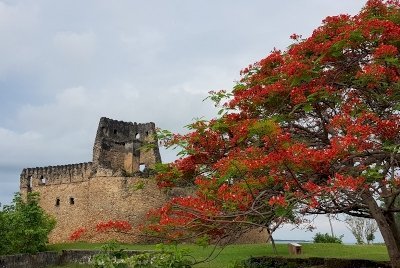
From the two inscribed locations, I only saw Kilwa Kisiwani. Kilwa Kisiwani is a vast ruin of the city which has been an important political and trade center from around the 8th century AD and since the 10th century the capital of the Sultanate of Kilwa. According to legend, the sultanate was founded by the rulers of Shiraz and, although historical sources do not currently confirm this thesis, it seems to be considered true among locals - the guide told me the same.
Regardless of the origin of the founders, the continuation of Kilwa Kisiwani's history is better documented. The Sultanate of Kilwa existed until the beginning of the 16th century. Its fall occurred with the arrival of the Portuguese, who, however, quickly gave way to the Omani.
All these rulers have left magnificent buildings in Kilwa Kisiwani. I started my trip from the Husuni Kubwa Palace, the spectacular ruins of the Sultan's Palace from the 14th century, i.e. from the times of the Kilwa Sultanate. The ruins are very well preserved and give a good idea of how powerful this kingdom was - the palace is really spacious and equipped with many novelties, such as the first (at least according to the guide) swimming pool in Africa. From the 14th-century well dug by the slaves of the Sultan the inhabitants of the surrounding village still draw water - I saw it with my own eyes!
Husuni Kubwa Palace is about a kilometer to the remaining …
Keep reading 0 commentsAnonymous
Ruins of Kilwa Kisiwani and Songo Mnara
Ruins of Kilwa Kisiwani and Songo Mnara (Inscribed)

November 12nd,2013 was my lucky day! For the first time i visited Kilwa Kisiwani
It is so excited place i have never seen in my life. It took me few minutes to reach the place from Kilwa masoko.
My first place to reach were Makutani palace, where there is a large walls then i went straight to Small Domed Mosque before going to great Mosque where sultane Al Hassan Bin Sulaiman used to pray.
From there i went to Gereza the Kilwa's fort which historically built by Portuguese. Then i went direct to Malindi Mosque also i visited Malindi graves where the Malindi People from Kenya buried over there. My last visit were to Hussuni Kubwa, the largest building in southern Sahara by the time of 13th to 14th century.
I real enjoy the place.
Keep reading 0 commentsSolivagant
Ruins of Kilwa Kisiwani and Songo Mnara
Ruins of Kilwa Kisiwani and Songo Mnara (Inscribed)
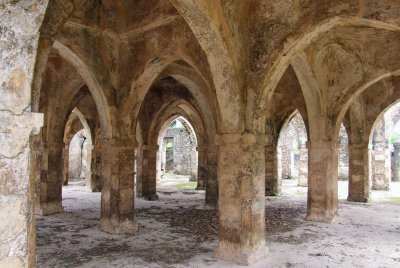
My favourite cultural WHS are those which give new and unexpected insights into a civilisation or a period of history. The ruins of Kilwa Kisiwani certainly did that for me by providing an entrée to the world of the Indian Ocean before the arrival of the Europeans (as well as to the impact of their arrival!). Pre-colonial Africa may still be seen as the “dark continent” in euro-centric minds but its east coast played a full part in this ocean’s multi continental trading system. At Kilwa you may get a feeling for the sophistication of what could be characterised as the “Swahili civilisation” between the 11th and 16th centuries and Kilwa was a major centre for the development of that civilization based on influences from Africa, Arabia, Persia and India.
Today this island off the Tanzanian coast contains just a sleepy village of around 800 inhabitants engaged in fishing and rudimentary agriculture. But, as you walk the quiet paths, you come across the ruins of palaces, great houses, trading courtyards, forts, mosques and tombs. Despite ups and downs in prosperity, this island was the location of a great trading city for around 700 years, reaching its peak between the 12th and early 14th centuries. Its particular “edge” over other east coast ports lay in its position at the terminus of routes into interior Africa and, in particular, to Great Zimbabwe. From here came gold which was distributed around Eurasia – indeed one period of decline was associated with the …
Keep reading 0 comments
